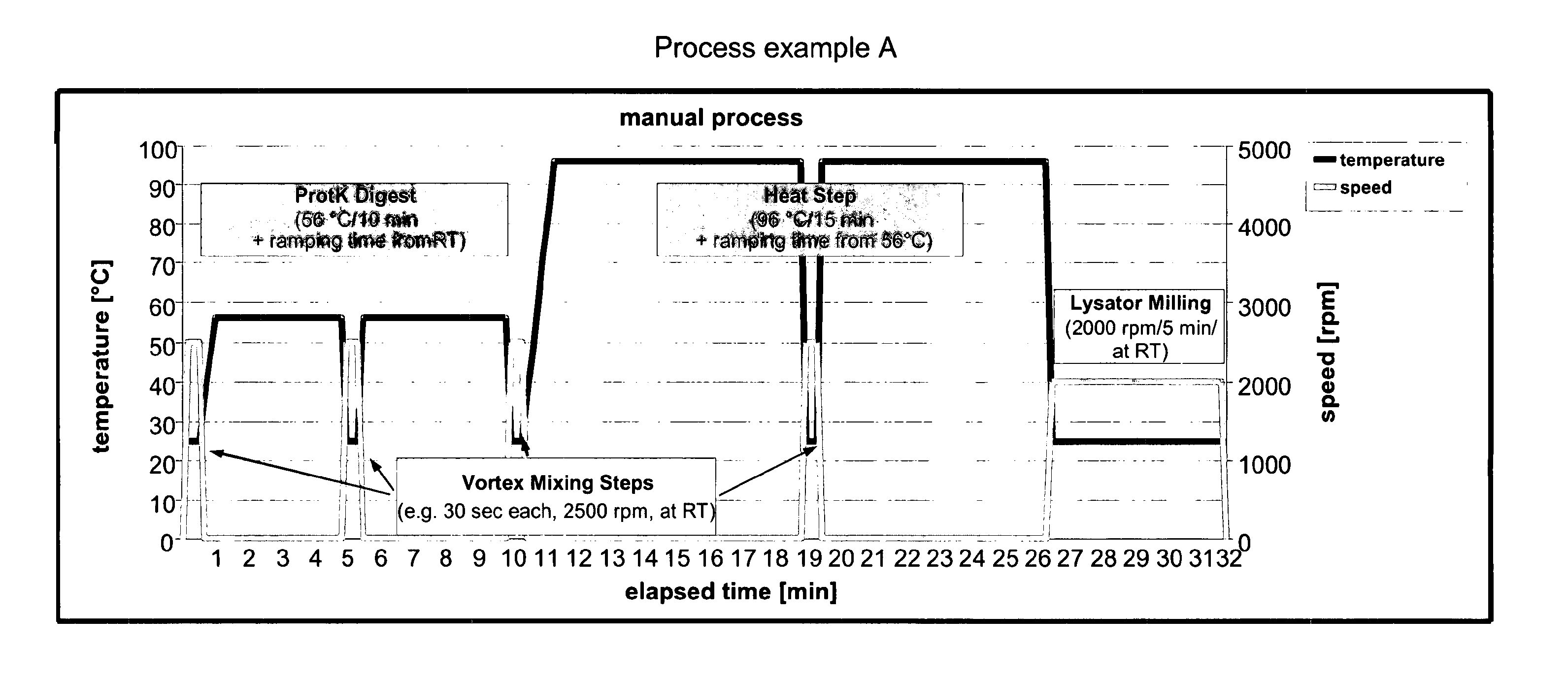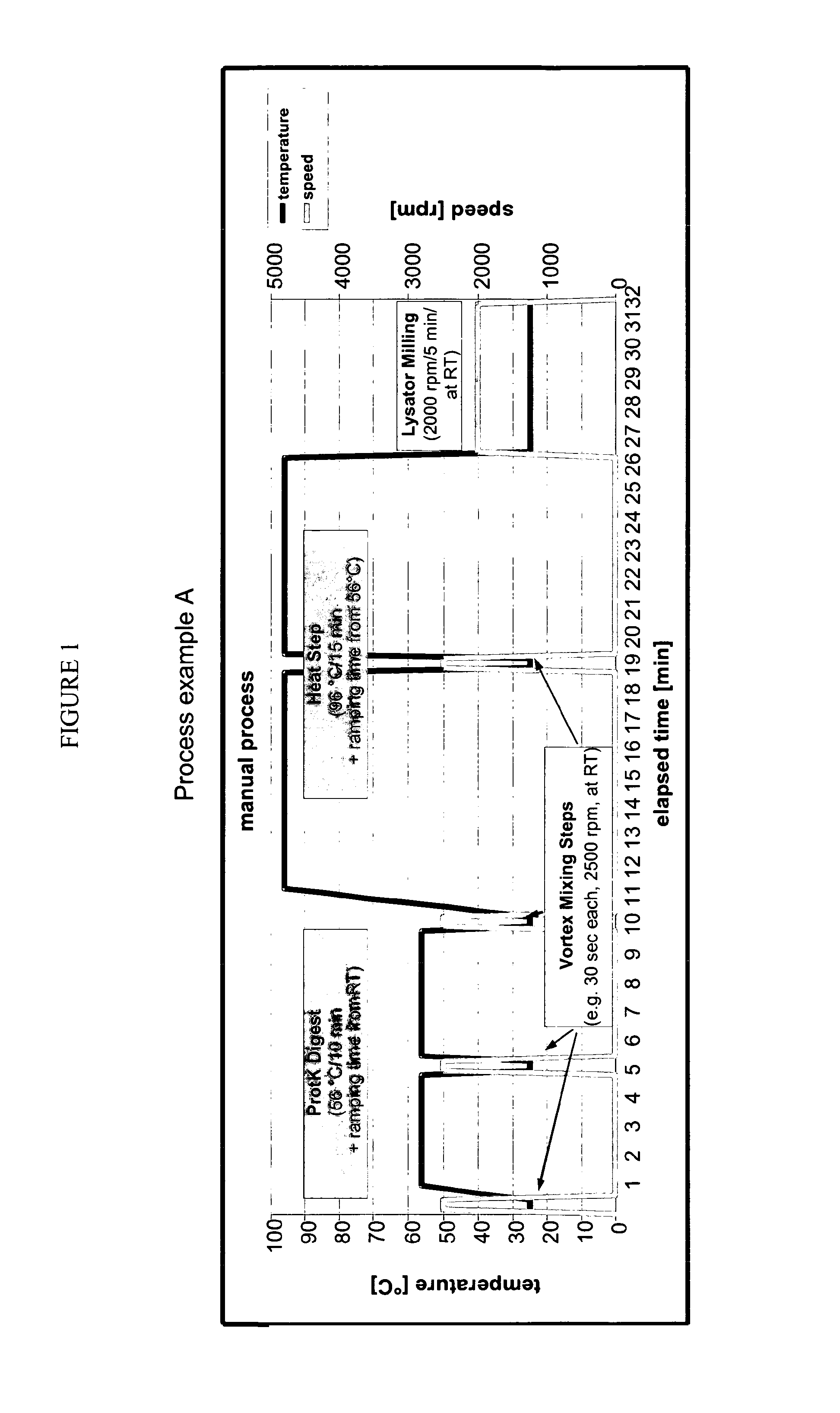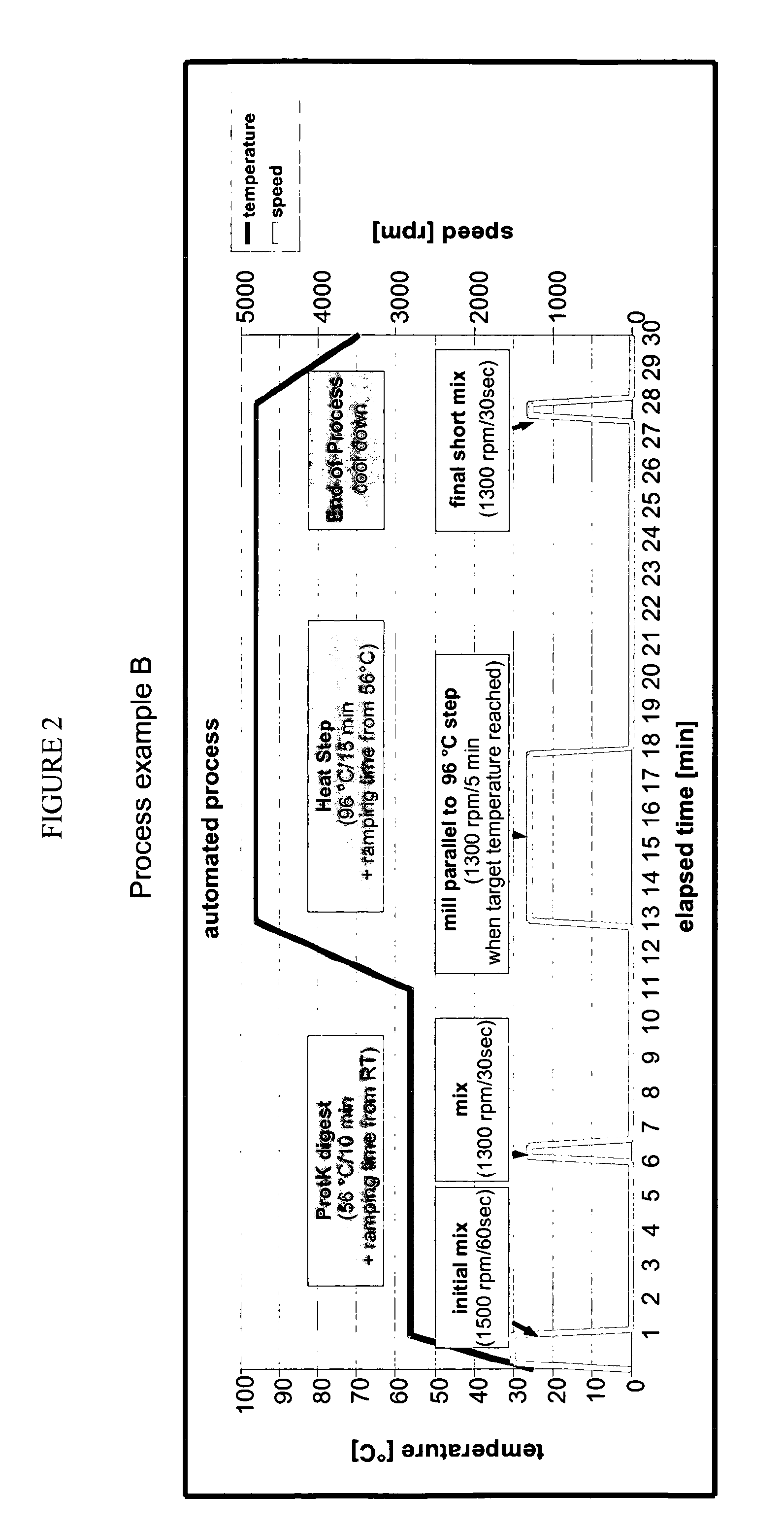Universally Applicable Lysis Buffer and Processing Methods for the Lysis of Bodily Samples
a lysis buffer and bodily sample technology, applied in the field of universally applicable lysis buffer and processing method for bodily sample lysis, can solve the problems of inability to use a standardized, user-friendly routine protocol for all sample types, inability to identify pathogens or risk factors, and low efficiency,
- Summary
- Abstract
- Description
- Claims
- Application Information
AI Technical Summary
Benefits of technology
Problems solved by technology
Method used
Image
Examples
example 1
Process Details and Overview
[0174]
Materials and Equipmentconsumables and chemicalsitemsupplierordering numberscrew cap tubes (1.5 ml)e.g., neolab1-6186screw capse.g., neolab1-6193glass beads, 425-600 μm,Sigma-AldrichG8772acid-washedlysis buffer ALQiagen19075DL-Dithiothreitol (DTT)Sigma-Aldrich43816solution 1MProteinase K (20 mg / ml,Qiagen (ready-to-use19131>600 mAU / ml)solution)alternativelySigma-Aldrich (solid)P2308ethanol 96%Carl RothP075.3QiaAmp ™ Blood Mini KitQiagen51104Eppendorf DualfilterneolabE6513T.I.P.S. (50-1000 μl)equipmentitemsuppliercommentheating block (56-96° C.)e.g., Eppendorfor equivalentthermomixerbead milling deviceCuretisvortex mixere.g., IKAor equivalentcentrifuge (13000 rpm)e.g., Heraeus Biofugeor equivalentfrescocomposition of lysis tubeitemamount / concentrationglass beads, 600 μm, acid-washed140 mglysis buffer AL230 μlDTT solution 1M 10 μlProteinase K 20 μl (added together with sample)patient sample220 μltotal volume (final reaction)480 μl
Preparation and Storag...
example 2
Sample Type Variability and Impact of Lysis Features
[0189]76 samples of different origins (respiratory and relevant other samples, like punctates and drainages) were scored for viscosity, blood and sediment content to describe the differences of sample types based on the average score (FIG. 3). Included number of samples for each type are given in brackets. From each sample type, including blood, reference samples were selected to cover the full range of relevant samples for respiratory diseases (total: 12 samples).
[0190]Each of these samples was subjected to three different lysis protocols to determine the impact of individual lysis features: (a) manual full protocol as described above, (b) full protocol without addition of proteinase K, (c) protocol without 96° C. heating step (instead sample was placed to ambient temperature). All samples have been subjected to a final bead milling step of 5 minutes, the lysate was then transferred, mixed with ethanol and applied to a silica memb...
example 3
Lysis Efficiency and Flow Behavior Through Silica Membranes without Proteinase K Treatment
[0192]In a second set of experiments, the impact of the proteinase K digestion, heating, milling and parallel heating / milling was examined with tracheal secretions. In particular, samples with high viscosities and / or sediment have been selected. Such samples are likely to be difficult to lyse. In a first step, the samples were incubated at 96° C. for 15 min directly after addition to the lysis buffer (without proteinase K) and short mixing. Bead milling was either performed for 5 min at room temperature after completion of the 96° C. incubation step [M] or parallel to the heating step. The progress of the lysis was monitored over time. Lysed supernatants were then mixed with ethanol and applied to silica membranes as described above. Flow-through was monitored at increasing centrifugal forces starting at 4000 rpm. FIGS. 6A and 6B each show two examples reflecting the observed variability for di...
PUM
| Property | Measurement | Unit |
|---|---|---|
| Volume | aaaaa | aaaaa |
| Length | aaaaa | aaaaa |
Abstract
Description
Claims
Application Information
 Login to View More
Login to View More - R&D
- Intellectual Property
- Life Sciences
- Materials
- Tech Scout
- Unparalleled Data Quality
- Higher Quality Content
- 60% Fewer Hallucinations
Browse by: Latest US Patents, China's latest patents, Technical Efficacy Thesaurus, Application Domain, Technology Topic, Popular Technical Reports.
© 2025 PatSnap. All rights reserved.Legal|Privacy policy|Modern Slavery Act Transparency Statement|Sitemap|About US| Contact US: help@patsnap.com



